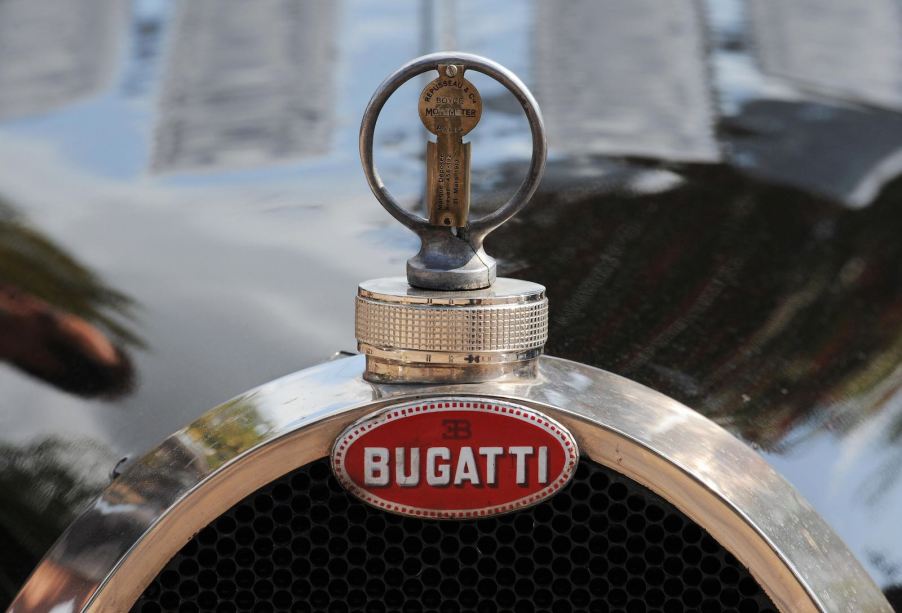
The Tourbillon Proves Mate Rimac Is a Worthy Successor to Ettore Bugatti
While on stage introducing the Bugatti Tourbillon, Mate Rimac said, “A new Bugatti is a very special occasion…a completely new one developed completely from scratch, only comes around every couple of decades…we are starting a new era in this century-old brand.”
His words must have stirred the small crowd lucky enough to witness the launch. But 36-year-old Mate Rimac looked as excited as anyone. The irony is that the Croatian-born entrepreneur may be one of the few humans on the planet worthy of continuing Ettore Bugatti’s legacy.
Ettore Bugatti was born in Italy in 1881. He was from a family of artists. He began a technical apprenticeship in Milan, and immediately showed a deeply instinctive understanding of motor vehicles. He built his first prototype–with four internal combustion engines–at 17. By 24 he was the head of technology at De Dietrich. He built 10 prototypes before founding Bugatti in 1909.

Bugatti established his car company in what is now France. From there he won most notable races of his day and sold luxury cars sought after by movie stars and royalty.
It’s important to note just how much room for improvement the automobile had in the 1910s and 1920s. Bugatti famously decided to “build lightness into the car.” His nimble Grand Prix race cars went up against chopped down trucks, a popular method of creating a good power-to-weight ratio in those days. It’s also important to note that in that time, vehicles were simple enough for a single engineer to control every aspect of the design process. Bugatti was less a modern engineer than an auteur. Thus the cult that arose around him and his marque.
Ettore died in 1947 and without any further innovations, the Bugatti company slowly went out of business. The name has been sold several times, and there have been two real attempts to reincarnate it. The first gave us the Bugatti 110, which competed in Le Mans in 1994. The second gave us the 2004 Veyron, the 2016 Chiron, and now the 2026 Tourbillon.
It is much more complicated to engineer a car than it was one hundred years ago. The process requires an army of engineers. More often than not, the end product is disjointed without enough spirit to unite its various systems. And it is even harder to start a car company. Only a handful of people succeeded in Bugatti’s era. And for decades, no major automakers got off the ground. I’d say the modern incarnation of Bugatti has had some truly incredible designers and engineers. But it has never had a clear successor to Ettore, a patron of the marque.

Enter Mate Rimac: Born in Croatia in 1988, he has been an automotive enthusiast his entire life. At 19 years old, he converted a 1984 BMW 3 series into an electric supercar in his garage, broke several records, and went completely viral. He’s continued his drive, building electric supercar concepts and finally founding Rimac Automobili. His quad-motor Nevera production car broke 23 performance records in a single track day. Mate stole many of these records from the Bugatti Chiron.
You might say that Mate Rimac was just born at the right time. The first production quad-motor electric hypercar was always going to break all the major speed records. But you could have said the same things about Ettore Bugatti. It takes bravery to lead many into a future that few can picture.
In 2021, Rimac and Bugatti announced a merger. I feared the next Bugatti would be a rebadged Nevera. I wasn’t afraid of a Bugatti EV. I actually believe if Ettore was alive today, he might have founded Rimac. But I was worried the Bugatti brand would lose all its identity. I didn’t count on Mate Rimac’s love of the marque’s heritage.

According to Mate Rimac, he conceived of a V16 hybrid hypercar with three electric motors years ago. He originally pitched the concept to VW who turned him down. He knew it wasn’t the direction he wanted to go with Rimac. But when he became the CEO of Bugatti, he pulled his old sketches out.
The resulting car will be much faster to 60 mph than the Chiron. It will also use torque vectoring to corner faster. It will add 200 horsepower, yet be much lower. And Mate’s hoping the production version will be slightly lighter too.
I’d say Mate Rimac understands exactly who buys Bugatti hypercars. The Tourbillon is named after an important component of luxury watches–of course invented in France. And its dashboard features a series of absurdly expensive analog gauges operated by exposed gears. Of course.
But this “analog” design philosophy permeates the entire car. This is why Mate insisted on a 1,000-horsepower naturally aspirated engine, paddle shifters (that may even work in electric mode), and exposed rear tires. This thing even has an engine start “pull knob,” just like Ettore’s pre-war Bugattis.
The Tourbillon is not an EV. It is still very much an internal combustion hypercar. And its various powertrains are united by a single soul. Mate Rimac admits the Tourbillon “feels like it all came from the same hand.” He was quick to say this is because his engineers “worked so beautifully, hand in hand.” But it may also be because Bugatti finally has a worthy successor to Ettore; Mate Rimac is ready to guide this company into the future.
See Mate Rimac give a tour of his Bugatti Tourbillon in the video below:



